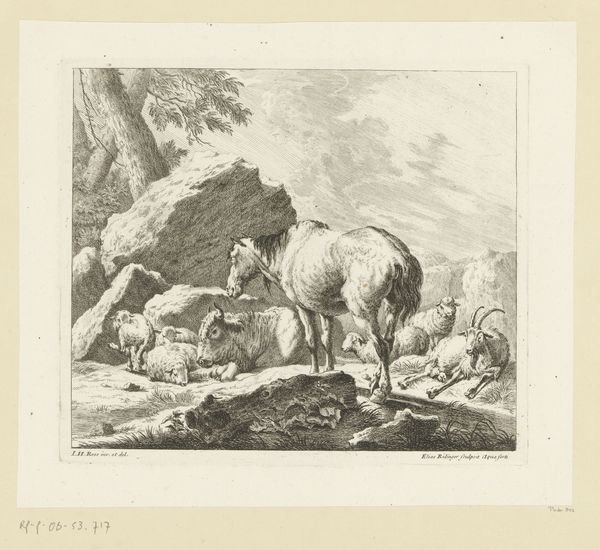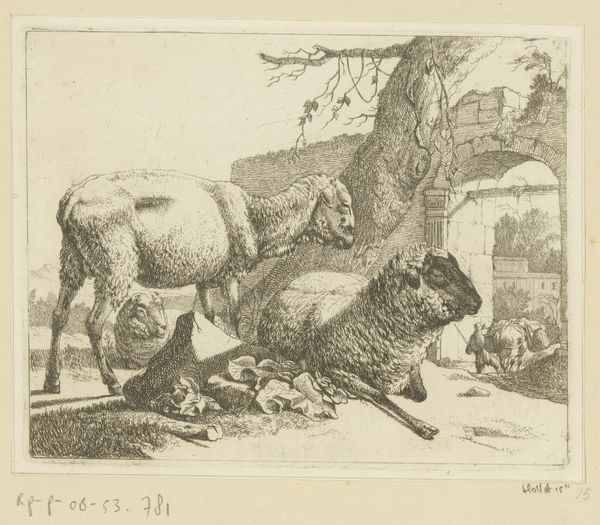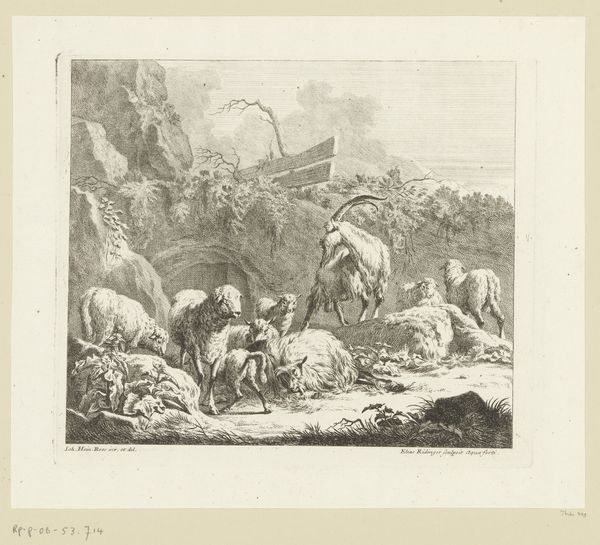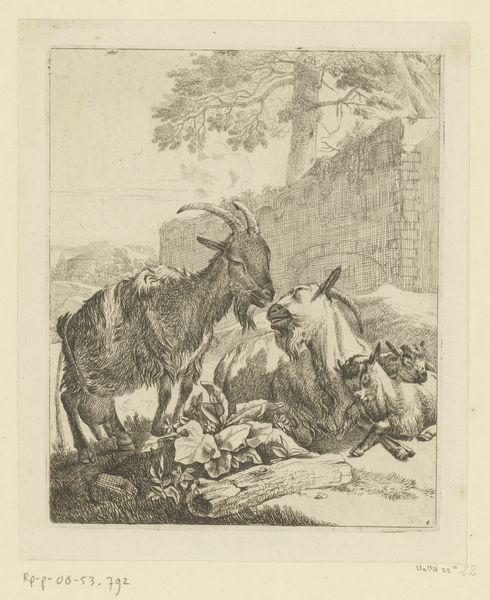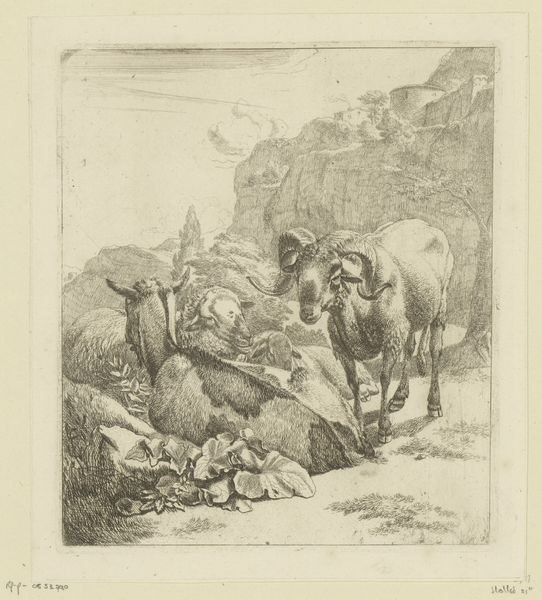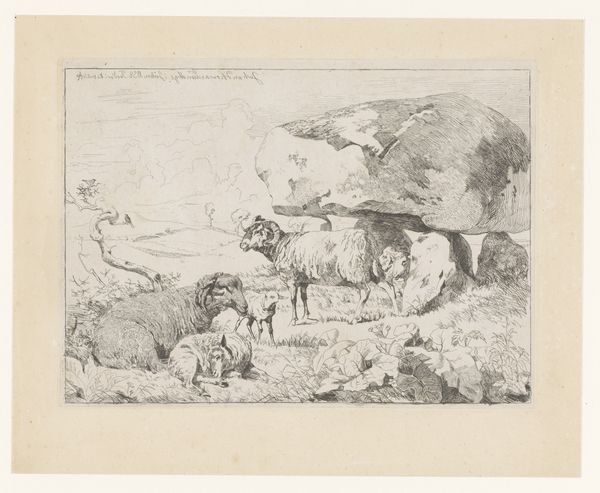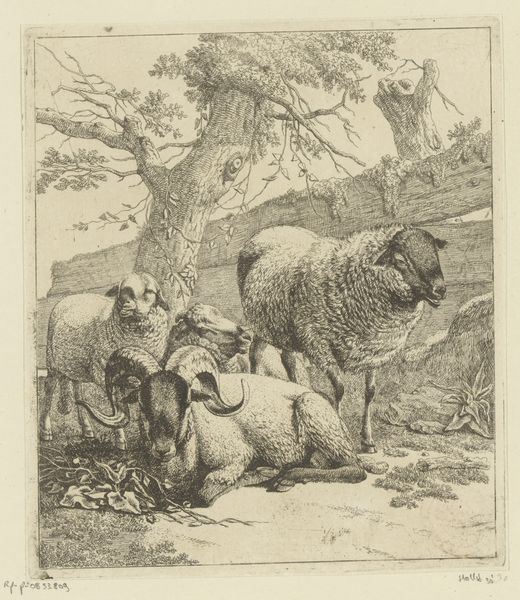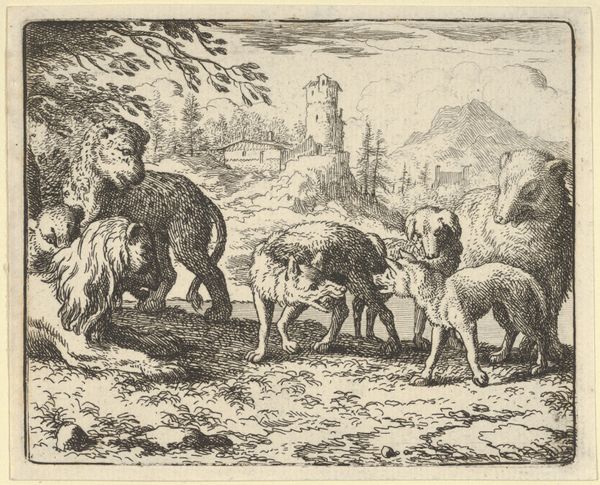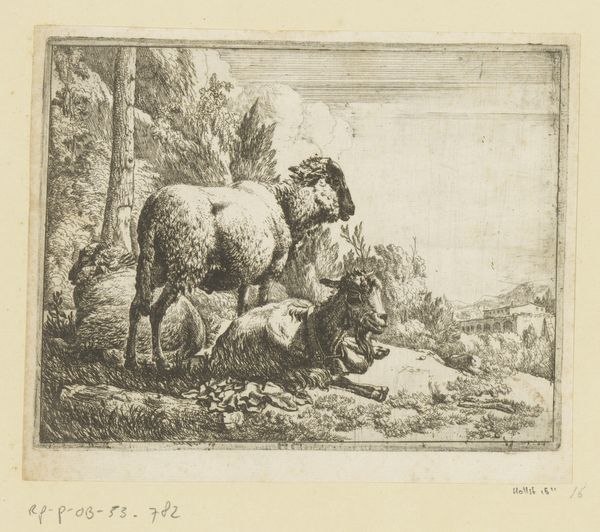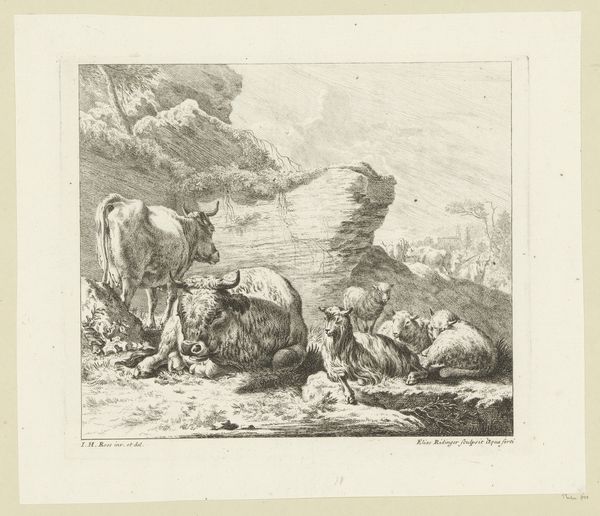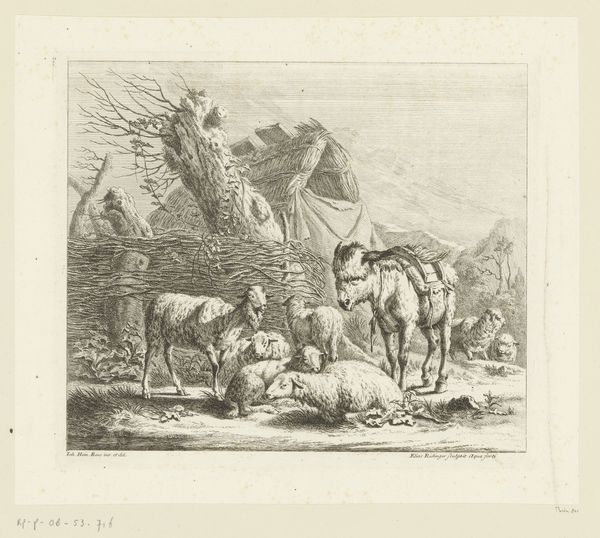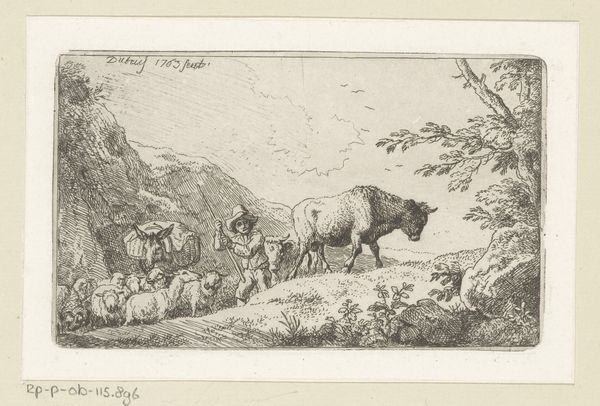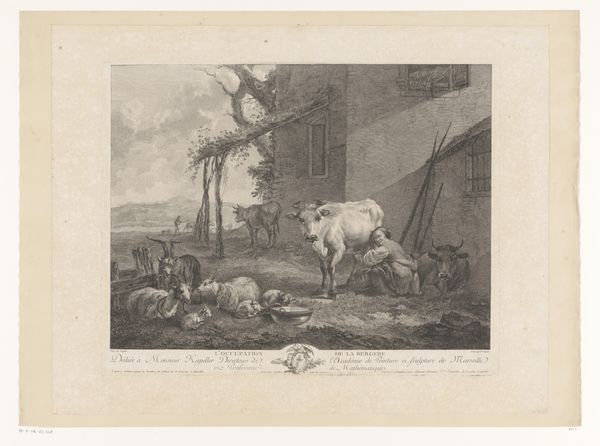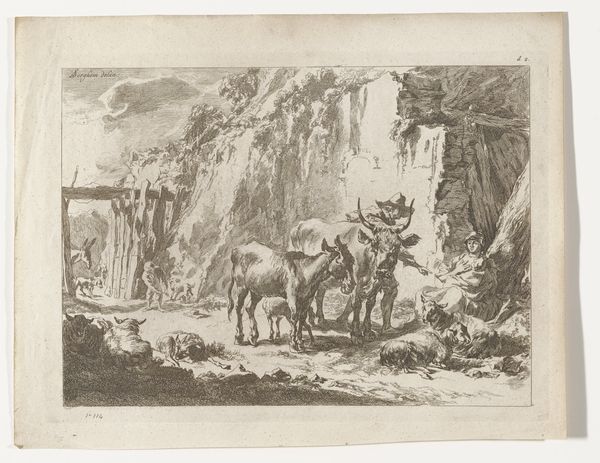
print, etching
#
baroque
#
animal
# print
#
etching
#
landscape
#
figuration
#
genre-painting
Dimensions: height 270 mm, width 313 mm
Copyright: Rijks Museum: Open Domain
Curator: This is "Ox, Goat, and Sheep" by Johann Elias Ridinger, an etching from sometime between 1708 and 1767. It's currently held in the Rijksmuseum collection. Editor: It's surprisingly pastoral, given the baroque style. The composition feels quite open, dominated by the figures of the animals and the landscape, though there are these buildings perched on a distant hillside, almost dreamlike in their execution. Curator: Ridinger was known for his animal studies, often within allegorical or hunting scenes popular in aristocratic circles. The placement of farm animals like these within a broader landscape tradition highlights evolving agricultural practices of the time. Consider the status of land ownership then, and how the animals contribute to both rural idyll and economic stability. Editor: I’m struck by the tonality and rendering of form here. The crisp lines and delicate hatching define not only the shapes but also the texture, especially on the coats of the animals. Note the play of light and shadow. The bull in particular feels monumental, almost sculptural in its presence, set against the soft rendering of the foliage. Curator: The very act of depicting farm animals gains significance when we think about the emerging merchant classes, and their interest in these formerly agrarian symbols, right? Genre painting experienced considerable appreciation from these groups who frequently engaged with the artistic scene through the popular art market. Editor: True. And notice, if you will, how Ridinger doesn't shy away from imperfections in rendering this particular vision of nature. Observe, especially, the textural contrasts--between the sleek musculature of the bull and the woolly softness of the sheep--captured using the stark graphic capabilities of the etching medium. Curator: Precisely. Beyond aesthetic preferences, what details did viewers of the day read into this? Were these simply studies of different textures, or statements on agricultural innovations, perhaps? Ridinger straddles this line masterfully, making us reflect on these cultural contexts. Editor: A captivating composition where artistry and naturalism blend seamlessly—an intriguing microcosm, perfectly framed. Curator: A picture indeed offering multiple avenues for contextual understanding and visual appreciation.
Comments
No comments
Be the first to comment and join the conversation on the ultimate creative platform.
